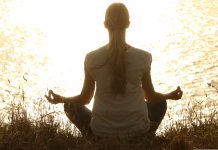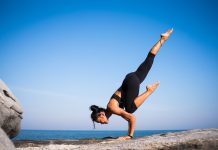Are you looking to improve your flexibility and incorporate a relaxing practice into your routine? Then, you’ve come to the right place. In this article, we’ll dive into yoga for flexibility, exploring eight beginner-friendly poses that you can easily incorporate into your daily life.
Not only will these poses help increase your flexibility, but they’ll also contribute to your overall well-being and inner balance. So start your practice today and unlock the countless benefits of yoga for flexibility.
Contents
Unlocking the Power of Flexibility: How Yoga Enhances Daily Life and Well-Being
Flexibility is crucial in our everyday lives, impacting everything from mobility to overall wellness. Good flexibility prevents injuries by ensuring the proper range of motion in our joints, enhancing our posture, reducing muscle imbalances, and promoting more efficient movement. Additionally, flexibility can lead to increased comfort during daily activities, improved sports performance, and a decreased risk of chronic pain.
Benefits of Yoga for Flexibility
Yoga is an excellent practice for increasing flexibility, as it involves a series of poses and stretches that target various muscle groups and joints. The benefits of yoga for flexibility are extensive, including:
- Improved Range of Motion: Regular yoga helps lengthen and stretch your muscles, resulting in an increased range of motion in your joints.
- Reduced Muscle Stiffness and Tension: It promotes relaxation, allowing muscles to release tension and tightness.
- Enhanced Balance and Stability: As your flexibility improves, so does your overall balance and strength, reducing the risk of falls and injuries.
- Greater Body Awareness: Practising yoga heightens your awareness, enabling you to identify areas of tightness or imbalance and address them accordingly.
- Relief From Stress and Anxiety: It encourages mindfulness and relaxation, helping alleviate stress and anxiety that can contribute to muscle tightness and reduced flexibility.
Yoga Fundamentals for Beginners
Proper alignment is essential when practising yoga, ensuring you perform each pose safely and effectively. Correct alignment helps distribute your body weight evenly, protecting your joints and minimizing the risk of injury.
Additionally, proper alignment enables you to reap the full benefits of each pose by engaging the appropriate muscles and promoting better flexibility, strength, and balance. As a beginner, it’s crucial to learn the basic principles of alignment and focus on your body’s cues to make necessary adjustments.
Breathing Techniques
This is a fundamental aspect of yoga that often gets overlooked. Proper breathing techniques enhance your practice by keeping you centred and focused and facilitating energy flow (prana) throughout your body. Some standard yoga breathing techniques include:
- Diaphragmatic Breathing: Inhale deeply through your nose, expanding your diaphragm and belly, and exhale slowly through your nose or mouth, contracting your diaphragm.
- Ujjayi Breath: Inhale through your nose and exhale with a slight constriction at the back of your throat, creating an oceanic sound. This technique helps calm the mind and warm the body.
- Alternate Nostril Breathing: With one hand, alternately close and open each nostril as you inhale and exhale, balancing the energy flow between the two sides of your body.
Tips for a Consistent Practice
Consistency is vital when it comes to experiencing the transformative benefits of yoga. Here are some tips to help you establish a consistent practice:
- Set Realistic Goals: Determine a suitable frequency and duration for your approach based on your current lifestyle and commitments.
- Create a Dedicated Space: Designate a peaceful and clutter-free area in your home where you can practice without distractions.
- Develop a Routine: Establish a specific time when you can consistently practice yoga, making it an integral part of your daily routine.
- Keep a Practice Journal: Document your progress, feelings, and insights during your yoga journey to stay motivated and track your growth.
- Be Patient and Compassionate With Yourself: Remember that yoga is a lifelong journey, and progress comes with time, patience, and consistent practice.
8 Easy Yoga Poses for Flexibility
Tackling on a journey to improve your flexibility can be rewarding and enjoyable, especially when incorporating yoga into your routine. With its diverse poses and stretches, yoga provides countless opportunities to target various muscle groups and joints. Here, we present eight easy yoga poses designed to enhance flexibility, perfect for beginners looking to improve their range of motion, reduce muscle stiffness, and achieve overall wellness.
Cat-Cow Stretch
The Cat-Cow Stretch is a gentle and accessible yoga pose that offers numerous benefits to practitioners of all levels. Some of the key benefits include:
- Improved Spinal Flexibility: The dynamic flow between the two positions helps to warm up and mobilize the spine, increasing its overall flexibility.
- Relief From Back and Neck Pain: Cat-Cow can alleviate discomfort caused by poor posture or tension by stretching and strengthening the muscles supporting the spine.
- Enhanced Body Awareness: the focus on synchronized movement and breath in this stretch cultivates greater body awareness and mindfulness.
- Reduced Stress and Anxiety: The rhythmic nature of Cat-Cow promotes relaxation, helping to calm the mind and reduce stress.
Follow these easy steps to execute:
- Begin on all fours, with your hands placed shoulder-width apart and your knees hip-width apart. Ensure that your wrists are below your shoulders and your knees are below your hips.
- Inhale as you slowly drop your belly towards the floor, arching your back and lifting your chest and tailbone towards the sky. This is the Cow pose.
- Exhale as you round your spine towards the ceiling, tucking your tailbone under and bringing your chin towards your chest. This is the Cat pose.
- Flow between the Cat and Cow poses, synchronizing your movement with your breath. Perform this stretch for 5-10 breaths or as long as desired.
Downward-Facing Dog
Downward-Facing Dog is a classic yoga pose that offers many benefits to practitioners, making it a staple in many yoga sequences. Some of the key benefits include:
- Increased Flexibility: The pose stretches the hamstrings, calves, and shoulders, promoting overall flexibility.
- Improved Strength: Downward-Facing Dog engages the upper body muscles, particularly the shoulders and arms while strengthening the core and legs.
- Decompression of the Spine: The inversion aspect of the pose helps to elongate the spine and relieve pressure on the vertebrae.
- Enhanced Circulation: As an inversion, this pose encourages blood flow to the brain, increasing energy and mental clarity.
- Reduced Stress and Anxiety: Combining deep breathing and physical exertion in Downward-Facing Dog can help alleviate tension and promote relaxation.
These simple steps must be followed to perform:
- Begin on your hands and knees, with your hands shoulder-width apart and your knees hip-width apart.
- Spread your fingers wide and press your palms firmly into the mat. Tuck your toes under.
- As you exhale, lift your knees off the floor, straightening your legs and pushing your hips up and back. Aim to create an inverted V-shape with your body.
- Keep your feet hip-width apart and press your heels towards the floor while maintaining a slight knee bend to prevent hyperextension.
- Engage your core and draw your shoulder blades down your back, allowing your head to hang freely between your arms.
- Hold the pose for 5-10 breaths or as long as desired, focusing on deep and steady breathing. To exit the pose, gently lower your knees to the mat on an exhale.
Child’s Pose
Child’s Pose is a gentle, restorative yoga pose that offers a variety of benefits, making it an excellent addition to any yoga practice. Some of the key benefits include:
- Improved Flexibility: The pose stretches the hips, thighs, and ankles, contributing to overall flexibility.
- Spinal Decompression: As you fold forward in Child’s Pose, the spine gently lengthens, relieving tension and discomfort.
- Reduced Stress and Anxiety: the comforting, inward nature of Child’s Pose promotes relaxation and mental calmness, helping to alleviate stress.
- Enhanced Digestion: The gentle abdomen compression in Child’s Pose can stimulate digestion and support healthy elimination.
- Rest and Rejuvenation: As a restorative pose, Child’s Pose allows the practitioner to pause, focus on the breath, and restore energy levels.
To achieve this, adhere to these uncomplicated steps:
- Begin on your hands and knees, with your knees hip-width apart or slightly wider. Bring your big toes to the touch.
- As you exhale, sit your hips back towards your heels and gently fold your upper body forward between your thighs, extending your arms out in front of you.
- Allow your forehead to rest on the mat or a cushion for support. Relax your shoulders away from your ears.
- Breathe deeply, focusing on expanding your ribs and lower back with each inhale. Hold the pose for as long as desired, using this time to connect with your breath and release any tension in your body.
- To exit the pose, slowly lift your upper body and return to your hands and knees on an inhale.
Seated Forward Bend
Seated Forward Bend is a deeply calming and therapeutic yoga pose that offers numerous benefits to practitioners of all levels. Some of the key benefits include:
- Improved Flexibility: The pose stretches the hamstrings, calves, and lower back, contributing to overall flexibility and relieving tightness.
- Spinal Decompression: Seated Forward Bend lengthens the spine, helping to release tension and promote proper alignment.
- Reduced Stress and Anxiety: The inward nature of the pose encourages relaxation and introspection, making it an effective tool for managing stress and anxiety.
- Enhanced Digestion: The gentle abdomen compression in this pose can stimulate digestion and support healthy elimination.
- Relief From Headaches and Fatigue: The calming effects of Seated Forward Bend can alleviate headaches and fatigue, making it an excellent pose to practice during times of low energy.
These straightforward steps should be pursued to carry out:
- First, sit on your mat with your legs extended straight in front of you. If your hamstrings are tight or your lower back rounds, sit on a folded blanket or cushion to elevate your hips.
- Flex your feet and engage your thigh muscles, ensuring your sit bones are grounded into the mat.
- Inhale and lengthen your spine, reaching your arms overhead. As you exhale, hinge forward from your hips, maintaining a straight back.
- Reach for your shins, ankles, or feet, or use a strap to loop around your feet if needed. Keep your chest lifted and avoid rounding your back.
- Hold the pose for 5-10 breaths or as long as desired, focusing on deep, steady breaths. To exit the pose, inhale and slowly lift your upper body, returning to an upright seated position.
Cobra Pose
It is a rejuvenating backbend that offers a range of benefits, making it an excellent addition to various yoga practices. Some of the key benefits include:
- Improved Flexibility: The pose stretches the chest, shoulders, and abdominal muscles, increasing flexibility.
- Spinal Decompression: Cobra Pose helps to lengthen the spine and alleviate compression, improving posture and reducing discomfort in the back.
- Strengthened Back Muscles: This pose engages the powers of the lower back, helping to build strength and support proper alignment.
- Relief From Stress and Fatigue: The energizing nature of Cobra Pose can help to reduce stress and invigorate the body, combating fatigue.
- Enhanced Lung Capacity: By opening the chest and deepening the breath, Cobra Pose can improve lung function and respiratory health.
Follow these simple guidelines to accomplish the following:
- Lie on your stomach with your legs extended straight behind you and the tops of your feet resting on the mat.
- Place your hands under your shoulders and your elbows close to your body.
- Inhale and gently press your hands into the mat, lifting your chest and head off the floor. Engage your back muscles and keep your hips, legs, and feet grounded.
- Maintain a slight bend in your elbows to prevent hyperextension, and draw your shoulder blades down your back, opening your chest.
- Gaze forward or slightly upward, ensuring that your neck remains comfortable. Hold the pose for 3-5 breaths or as long as desired.
- To exit the pose, exhale and slowly lower your chest and head back to the mat.
Pigeon Pose
Pigeon Pose is a rejuvenating yoga posture that brings a plethora of benefits to practitioners. Some of the key benefits include:
- Powerful Hip Opener that offers numerous benefits to practitioners, making it a valuable addition to many yoga sequences. Some of the key benefits include:
- Improved Flexibility: The poses stretch the hip flexors, glutes, and groin muscles, contributing to greater hip flexibility and range of motion.
- Reduced Lower Back Tension: Pigeon Pose can help alleviate tightness and discomfort in the lower back by opening the hips.
- Enhanced Emotional Release: Tightness in the hips is often linked to stored emotions. Pigeon Pose can facilitate the release of these emotions, promoting mental well-being.
- Improved Posture: By releasing tightness in the hips, Pigeon Pose can improve overall posture.
- Relief From Sciatica Pain: The deep stretch in Pigeon Pose can help alleviate sciatic nerve pain for some practitioners.
To execute, follow these basic steps:
- Begin in Downward-Facing Dog. Inhale and lift your right leg, then exhale and bring your right knee towards your right wrist, placing it on the mat.
- Position your right foot towards your left wrist, with your shin resting diagonally on the mat. Adjust your foot position for comfort and ensure your right knee is protected.
- Extend your left leg straight behind you, with the top of your foot resting on the mat. Square your hips, and use a folded blanket or cushion under your right hip for support if needed.
- Inhale and lengthen your spine. You can stay upright on your palms or exhale and fold forward, resting your forehead on your hands, a block, or the mat.
- Hold the pose for 5-10 breaths or as long as desired, focusing on deep, steady breaths. To exit the pose, press into your hands, tuck your back toes, and return to Downward-Facing Dog. Repeat on the other side.
Happy Baby Pose
A gentle, grounding yoga pose that offers numerous benefits to practitioners, making it an excellent addition to any practice. Some of the key benefits include:
- Improved Flexibility: The pose stretches the inner groin muscles and hamstrings, contributing to more excellent hip and leg flexibility.
- Relief From Lower Back Tension: Happy Baby Pose provides a gentle release for the lower back, helping to alleviate tightness and discomfort.
- Calming Effect: The nurturing nature of Happy Baby Pose promotes relaxation and calmness, making it an effective stress reliever.
- Enhanced Digestion: The gentle abdomen compression in this pose can stimulate digestion and support healthy elimination.
- Increased Body Awareness: Practising Happy Baby Pose encourages a sense of body awareness, helping you to identify areas of tightness or imbalance.
These elementary steps must be followed to perform:
- First, lie on your back on your mat, with your knees bent into your chest.
- Reach your hands to the insides of your knees, then grasp the outsides of your feet or ankles. Use a strap looped around each foot if you cannot comfortably reach your feet.
- Pull your knees towards your armpits, ensuring your ankles are stacked directly above your knees, and your shins are perpendicular to the floor.
- Press your tailbone and lower back into the mat, maintaining a natural curve in your spine. Ensure your neck and head remain relaxed on the carpet.
- Hold the pose for 5-10 breaths or as long as desired, focusing on deep, steady breaths. To exit the pose, release your feet, hug your knees into your chest, and extend your legs onto the mat.
Legs-Up-The-Wall Pose
Legs-Up-The-Wall Pose is a restorative yoga posture that offers a range of benefits to practitioners. Some of the key benefits include:
- Improved Circulation: The inversion of the Legs-Up-The-Wall Pose encourages blood flow to the upper body and head, promoting healthy circulation.
- Reduced Swelling and Inflammation: The gentle compression in this pose can help reduce swelling and inflammation in the legs and feet.
- Calming Effect: The supportive nature of the pose encourages relaxation and can be an effective tool for managing stress and anxiety.
- Enhanced Flexibility: The pose can help stretch and release tension in the hamstrings, calves, and lower back, promoting greater flexibility.
- Relief From Leg and Foot Discomfort: Legs-Up-The-Wall Pose can help reduce pain in the legs and feet, particularly after a long day of standing or walking.
Pursue these easy-to-follow steps to achieve:
- First, find an open wall space and sit sideways with your right hip against the wall.
- Swing your legs up onto the wall as you lower your torso onto the mat, keeping your legs straight and feet flexed.
- Scoot your hips as close to the wall as possible, with your legs forming a 90-degree angle with your torso. Allow your arms to rest alongside your body.
- Close your eyes and focus on deep, steady breathing. You can remain in the pose for as long as desired, anywhere from 5-20 minutes.
- To exit the pose, gently lower your legs and roll onto your side before pressing yourself into a seated position.
Tips for Modifying Poses for Various Flexibility Levels
Using Props (Blocks, Straps, Etc.)
Props are essential for modifying yoga poses to fit various flexibility levels. They can help you properly align, deepen your stretches, and prevent injury. Some commonly used props include blocks, straps, blankets, and bolsters. Here are a few tips for using props effectively:
- Don’t Be Afraid to Experiment: Different props will work better for different poses and individuals. Experiment with various props to find what works best for you.
- Use Props for Support: Props can help you maintain proper alignment and support your body during challenging poses.
- Modify the Height and Placement of Props: Adjusting the size and placement of your braces can make a significant difference in the intensity of a pose. For example, a higher block can help bring the ground closer to you for more accessible forward folds.
- Choose the Right Props for the Pose: Different poses may require different props. For example, a strap may be helpful for seated forward folds, while a block may be beneficial for Triangle Pose.
Finding the Right Intensity
It’s crucial to find the right level of intensity for your body during yoga practice. Going too far too soon can lead to injury, while not pushing yourself enough can limit your progress. Here are a few tips for finding the right intensity:
- Listen to Your Body: Pay attention to your body’s signals during yoga practice. For example, ease back or modify the pose if a pose feels uncomfortable or painful.
- Use Your Breath: Your breath can be a powerful tool for regulating the intensity of a pose. If a pose feels challenging, focus on slow, deep breaths to help calm your mind and body.
- Work Gradually: Wait to achieve complete flexibility in a pose overnight. Then, work slowly, and allow your body to adapt to new levels of flexibility over time.
- Embrace Modifications: Modifications can be a valuable tool for adjusting the intensity of a pose. Feel free to use props or make other modifications to find the right power level for your body.
Integrating These Poses Into Your Daily Routine
Creating a Dedicated Practice Space
Creating a dedicated space for your yoga practice can help you establish a routine and make it easier to integrate these poses into your daily routine. Here are a few tips for creating a dedicated practice space:
- Choose a Quiet, Comfortable Space: Look for an area in your home that is quiet, free from distractions, and comfortable.
- Set the Mood: Consider incorporating calming elements into your practice space, such as candles, incense, or calming music.
- Keep Your Props Nearby: Keep any necessary props nearby so you don’t have to interrupt your practice to retrieve them.
- Keep Your Space Clean and Organized: A clean room can help promote relaxation and reduce distractions during practice.
Incorporating a Warm-Up
Incorporating a warm-up into your practice can help prepare your body for the poses and prevent injury. Here are a few tips for warming up:
- Start With Gentle Stretches: Begin with gentle stretches, such as Cat-Cow or Child’s Pose, to loosen up your muscles and joints.
- Incorporate Dynamic Movements: Add vigorous activities, such as Sun Salutations or standing twists, to increase your heart rate and warm your body.
- Focus on Areas of Tension: If you have anxiety or tightness, focus on warming up those areas specifically.
Scheduling Consistent Practice Time
Consistent practice time is essential for integrating these poses into your daily routine. Here are a few tips for establishing a consistent practice schedule:
- Choose a Time That Works for You: Consider your daily routine and choose a time that works best for you, whether early or late at night.
- Start Small: Don’t jump into an hour-long practice immediately. Instead, start with a few poses and gradually build to a more extended practice.
- Be Flexible: Life can be unpredictable, and occasionally adjusting your practice time is okay. Just prioritize your course and return to it as soon as possible.
Additional Resources for Further Practice
Online Yoga Classes
Online yoga classes can be convenient and accessible to continue your yoga practice from home. Many options are available, from free YouTube videos to paid subscription services. Here are a few tips for finding a suitable online class:
- Look for Reputable Instructors and Platforms: Choose online classes from reputable instructors and venues that offer high-quality instruction and safety guidelines.
- Consider Your Experience Level: Look for classes appropriate for your experience level, whether you’re a beginner or an advanced practitioner.
- Read Reviews: Check out reviews from other users to get an idea of the quality of the class and instructor before signing up.
Local Yoga Studios and Workshops
Attending local yoga studios and workshops can be an excellent way to deepen your practice and connect with a community of fellow yogis. Here are a few tips for finding the proper studio or workshop:
- Research Local Options: Look for local studios and workshops in your area and read reviews from other users to get an idea of the quality of the instruction and community.
- Try Different Styles: Consider trying different types of yoga to find what works best for you.
- Attend Workshops and Events: Many studios offer workshops and events that can help you deepen your practice and learn new skills.
Books and DVDs
These can be valuable resources for furthering your yoga practice. There are many options available, from instructional books to guided practice DVDs. Here are a few tips for choosing the right resource:
- Look for Reputable Authors and Publishers: Choose books and DVDs from respected authors and publishers that offer high-quality instruction and safety guidelines.
- Consider Your Experience Level: Look for resources appropriate for your experience level, whether you’re a beginner or an advanced practitioner.
- Read Reviews: Check out reviews from other users to get an idea of the quality of the resource before purchasing.
Flexible and Fit: 8 Yoga Poses for Improved Range of Motion
In conclusion, practising yoga can increase flexibility, reduce stress, and promote well-being. Incorporating these eight beginner-friendly poses into your daily routine can improve your range of motion, release tension, and enhance your physical and mental health. Remember to focus on proper alignment, use props as needed, and modify the poses to suit your flexibility level.
You can reap the many benefits of a regular yoga practice with consistency and dedication. Whether you’re a beginner or an experienced practitioner, these poses are an excellent way to cultivate greater flexibility, balance, and peace of mind. So grab your mat and start your journey towards greater flexibility and well-being today!




![[2023] Network Marketing Success Tips Business Owners Are Doing](https://seihive.com/wp-content/uploads/2023/04/people-1979261-218x150.jpg)





